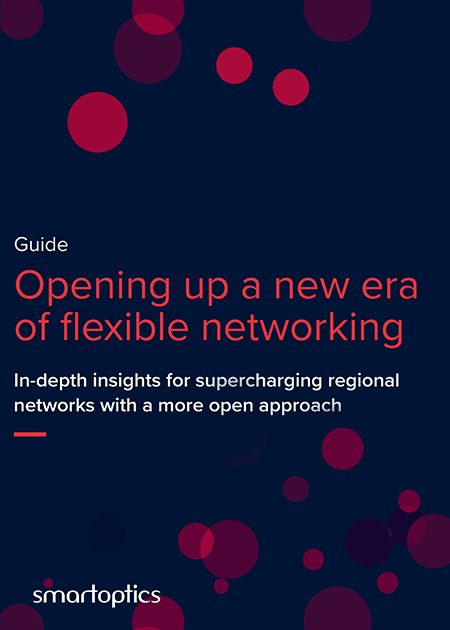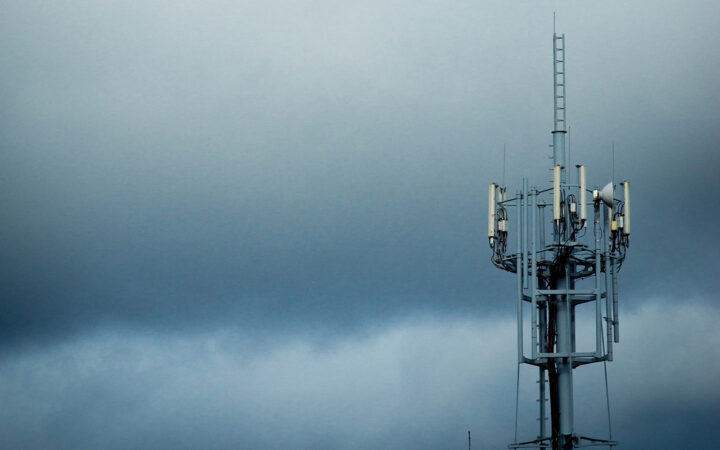HOW METRO NETWORKS EMERGED AND WHAT THE FUTURE HAS IN STORE
Driven by a general increase in data consumption in society and industry, higher bandwidth requirements have network operators looking to upgrade their metro networks. With new speeds and standards on the horizon, service providers and operators are challenged to find the most efficient, simple and cost-effective way of meeting these needs. Given the difference in the size and scope of metro networks compared with other types of networks, the solutions will need to be aligned with the specific needs of a metro network.
What is a metro network?
A metro network, or Metropolitan Area Network (MAN), is a network that provides connectivity within an area the size of a metropolitan region. In a metro network, service providers and operators serve local business and consumer subscribers from multiple data centers. This involves interconnecting several Local Area Networks (LANs) and enabling access to the internet and Wide Area Networks (WANs). In terms of reach, this puts a MAN in between a LAN and a WAN. A metro network can serve a metropolitan area as small as a couple dozen kilometers or as large as a couple hundred kilometers.
The establishment of Dense Wavelength Division Multiplexing (DWDM) technology helped drive the development of metro networks in the 2000s. DWDM enabled service providers to create dedicated metro networks on top of their dark fiber network. This made building and maintaining metro networks more cost-effective while also enabling subscribers to increase bandwidth as part of their subscription. Fiber optic rings providing Gigabit Ethernet soon became a common backbone of metro networks. The concept of using rings secures network performance by enabling data traffic to be rerouted in the event of congestion or failure at a given point. Metro networks can be deployed in the following four varieties:
- Pure Ethernet: affordable but difficult to implement reliably, mostly for small scale uses
- OTN: cost-effective when OTN infrastructure is already in place but suffers from low flexibility in managing bandwidth
- Ethernet over Multiprotocol Label Switching (MPLS): expensive but highly reliable and scalable, common with large service providers
- Ethernet over DWDM: flexible and efficient by allowing service providers to scale networks to meet customer needs and maximize the performance of each fiber
Core DWDM network vs. metro network layer
For providing high-speed connections to metro network customers, service providers have two options. The first is to utilize their core DWDM network, usually a WAN with a national or regional reach. This involves running metro traffic between data centers and to end users over this existing infrastructure. The second option is to off-load the core network by establishing a dedicated metro network layer.
While using the existing core network may seem simple enough, it can have undesired consequences for bandwidth. This is because connecting data centers and enterprise customers directly to the core network can take a toll on capacity over time. What happens when metro network traffic keeps increasing? It’s not efficient if the whole core network is slowed down. Therefore, to stay on the safe side, most service providers prefer to go with a dedicated metro network layer.
Metro networks have different needs than core networks
Service provider core networks tend to use solutions designed for large-scale usage over long distances. The footprint and complexity of this chassis-based equipment are perfectly adequate in the high-capacity core network, where demands are extremely high and resources are available to manage these. But metro networks don’t need to reach as far or have as much capacity as a core network.
The rapid increase in metro network traffic and the corresponding impact on capacity is putting cost efficiency high on the agenda for metro networks. As a result, keeping space and power consumption down is increasingly a key success factor for metro network operations. This demands compact, simple solutions aligned with the 80 km distance needs of a metro network that still maintain the right balance in terms of performance and scalability.
One example of a simple solution that has become popular for lower bandwidth metro networks is embedded WDM technology. This enables operators to simply plug transceivers directly into switches. For higher bandwidth requirements, muxponders or transponders can be used as open line systems to create a powerful yet easy-to-use and cost-efficient setup. Both of these options take less time to install and manage while minimizing power and space requirements.
Disaggregated open line tech marks clear upgrade path for metro networks
As service providers look to upgrade their metro networks to 100G and even beyond to 400G, a common concern is whether they will still be able to retain the benefits of simple, cost-effective solutions. Naturally, they want the increased bandwidth and capacity of faster speeds without having to bring in heavier, more complex equipment to support them. If the complexity level for metro networks were to increase and reach the level of the core network, costs would increase to deploy more resources and experts to manage the metro network.
Disaggregated open line technologies hold great promise for creating a simple upgrade path for the metro networks of tomorrow. The flexibility to freely combine networking equipment means metro network operators will not be locked into complex, inefficient and costly solutions. For instance, PAM4 transceivers, which come in a small form factor, can be used as the foundation for simple 100G DWDM networking solutions. External transponders based on open line technologies can be easily added if needed as well. Some disaggregated open line systems can even support upgrades to 400G.
Compatibility with a variety of transceivers and alignment with disaggregated open networking principles make Smartoptics open line systems a highly flexible solution for metro network operators. This provides support for both 100G now and 400G without having to replace the entire solution. All you have to do is change transceivers. Learn more about Smartoptics open line systems.

The guide for a new era of flexible networking
Download our guide to discover a new path to flexible networking

The guide for a new era of flexible networking
Download our guide to discover a new path to flexible networking
Related articles

What is a SAN and how does it protect mission-critical workloads?

What is Fibre Channel used for?
